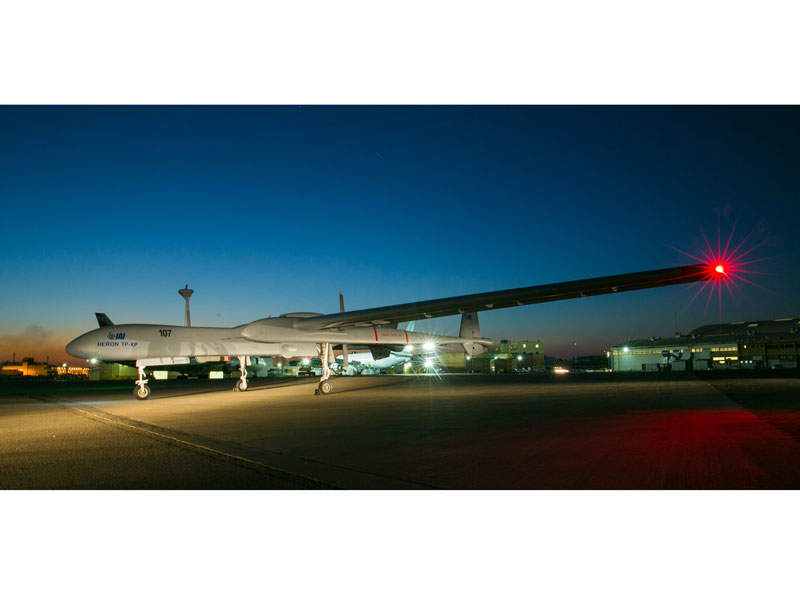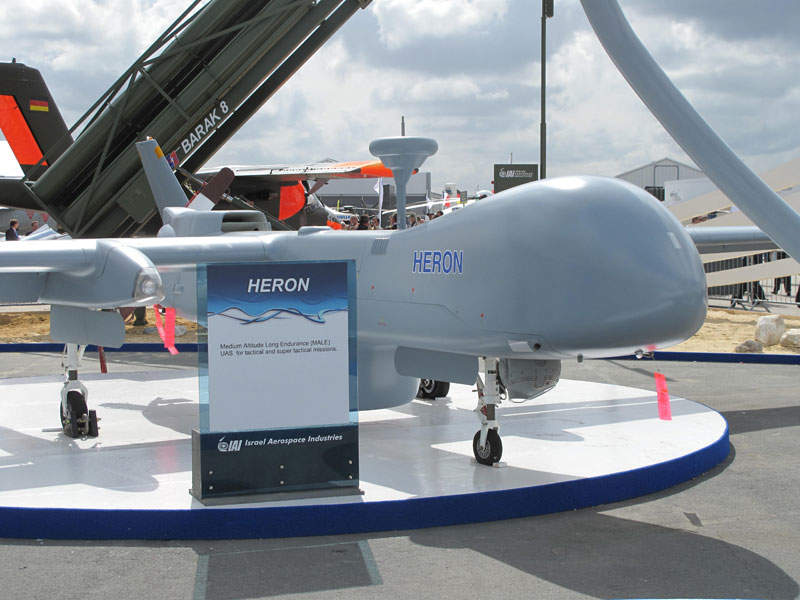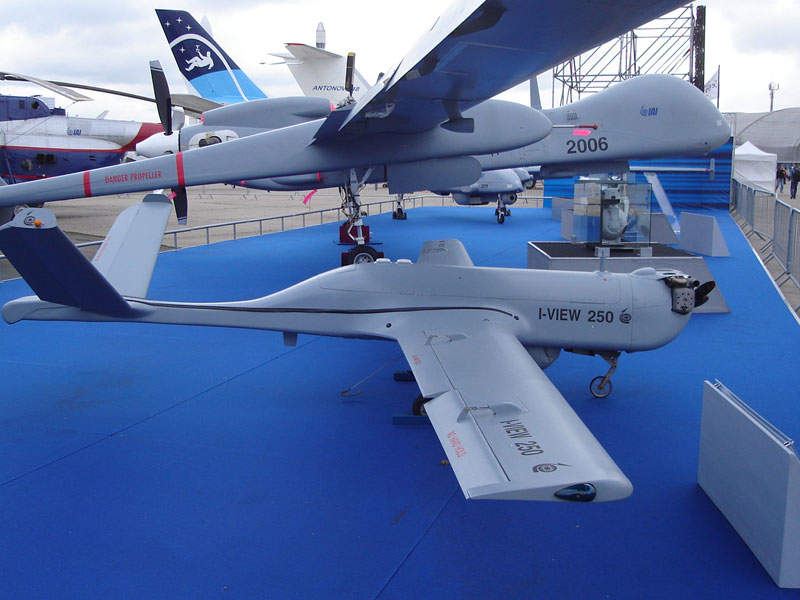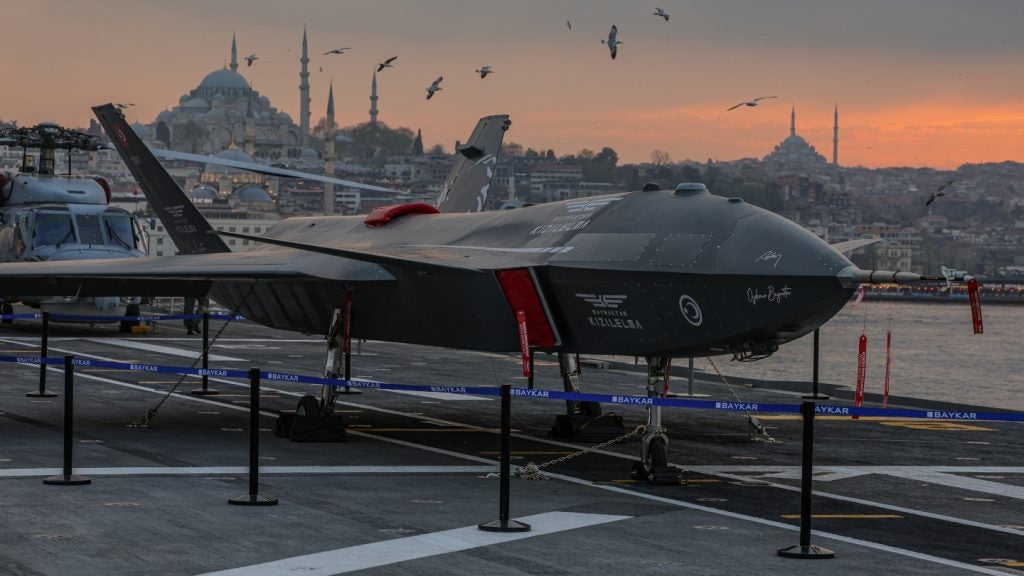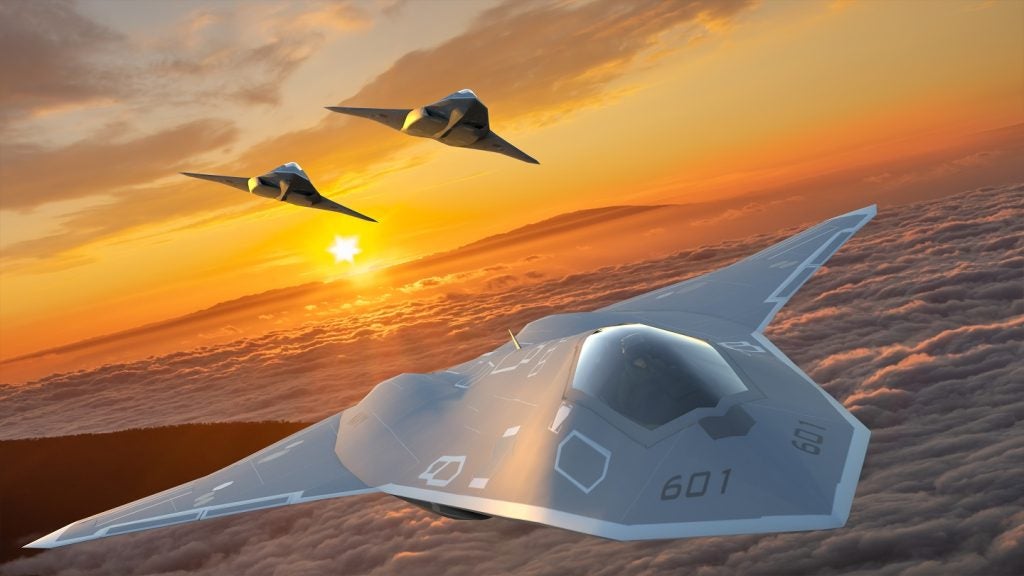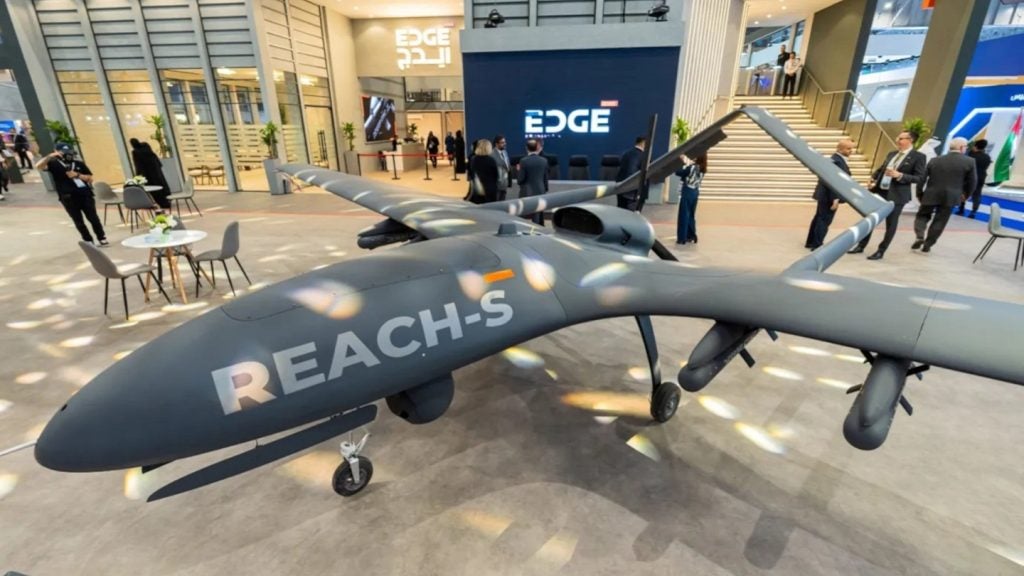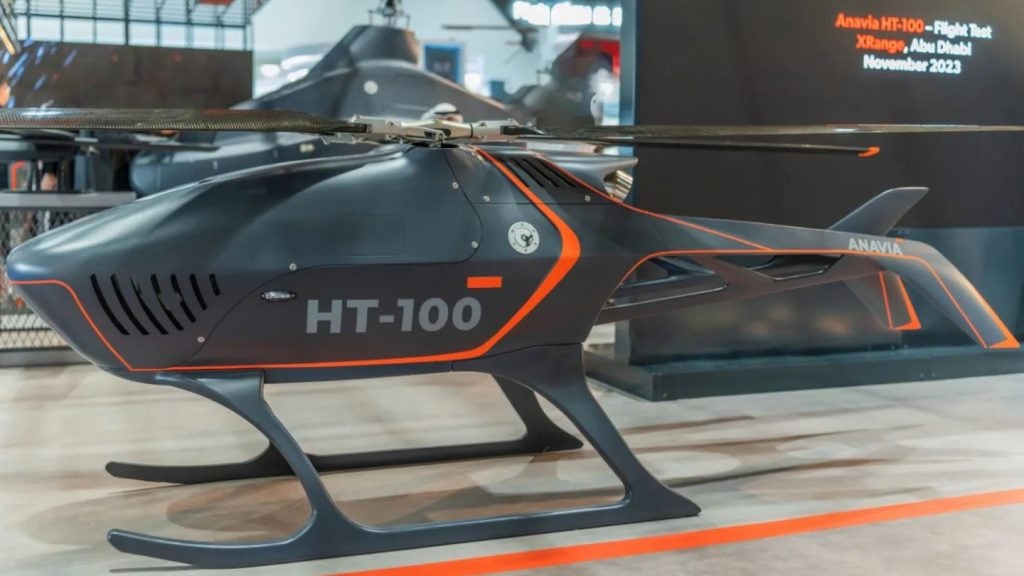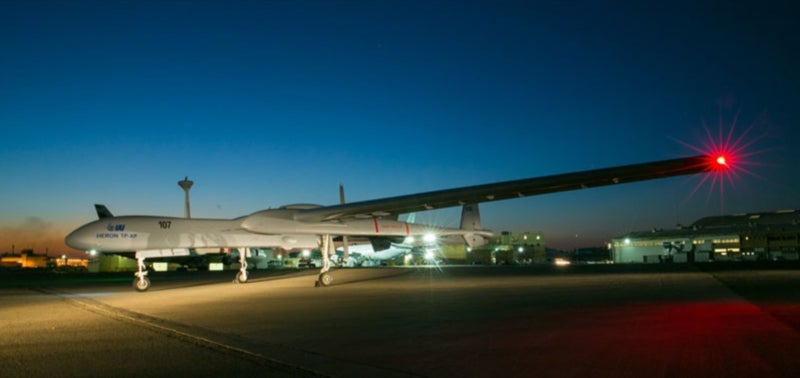
The Heron TP-XP advanced medium-altitude, long-endurance (MALE) unmanned aerial system (UAS) is the latest addition to the Heron family of UAS developed by Israel Aerospace Industries (IAI).
Developed as the special export version of Heron TP (IAI Eitan) unmanned aerial vehicle (UAV), the Heron TP-XP was introduced at the Aero India 2017 air show held at Yelahanka Air Force Station in Bengaluru, Karnataka, in February.
The new version features triple redundant avionics and carries smaller payloads compared to the Heron TP. It is suitable for a number of tactical missions, including intelligence, surveillance, reconnaissance, target acquisition and situational awareness.
Heron TP-XP unmanned aerial vehicle design
The Heron TP-XP unmanned aerial vehicle has an overall length of 14m and a maximum take-off weight of 5,400kg. Equipped with enlarged, long fuselage, the drone carries a number of mission-specific payloads weighing up to 450kg.
It features a high wing-monoplane design with a high aspect ratio. Spanning 26m, the wings are fitted with two longitudinal booms that extend rearward to provide support for the tail assembly. The tail section has two vertical stabilisers joined by a common tailplane. Winglet devices are attached to the wingtips to provide improved lift and efficiency for the UAV.
The XP version has a blunt, smooth elliptical-shaped nose cone and a retractable tri-cycle undercarriage. Consisting of one nose gear and two main gears, the landing gear assembly ensures safe take-off and landing.
The UAV’s launch and recovery is assisted by an automatic taxi take-off and landing (ATOL) system.
Avionics and payloads of Heron TP-XP UAV
The Heron TP-XP’s triple redundant flight control system provides safe and reliable operation by mitigating component faults.
Sensors carried by the UAV include laser range finder, electronic support measures (ESM), communications intelligence (COMINT), electronic intelligence (ELINT), synthetic aperture radar (SAR), and maritime patrol radar (MPR).
Mounted beneath the fuselage, the SAR is used for surveillance target classification and wide area search operations.
The drone can be optionally provided with an electro-optical / infrared (EO / IR) multi-sensor payload pod featuring high-definition EO / IR cameras and a laser designator to capture imagery and video.
Ground control station
The ground control station allows the operator to send control signals to the drone through a secure line-of-sight and / or satellite communications (SATCOM) data link. The imagery / video and flight information acquired by the UAV are processed, retrieved and stored at the ground segment.
Heron TP-XP UAV engine and performance
Power for the Heron TP-XP MALE UAV comes from a rear-mounted Pratt & Whitney Canada PT6 turboprop engine, which incorporates multi-stage axial and single-stage centrifugal compressor. Rated at 1,200hp, the engine offers increased fuel efficiency.
The UAV has a maximum speed of 220kt and can stay airborne for more than 30 hours. It has the ability to fly at altitudes of up to 45,000ft in crowded, commercial airspace.
Designed in compliance with STANAG 4671 airworthiness standard, the Heron TP-XP can perform missions in the airspace of NATO countries under all weather conditions.
The drone can transmit / receive communications to / from the ground control station at extended ranges of beyond line-of-sight (BLOS) with SATCOM.
Heron UAV variants
Developed by IAI’s Malat division, the Heron family of MALE unmanned aerial systems includes Heron, Heron TP, Super Heron, and Heron TP-XP.
The Heron UAS made its first flight in 1994. It was selected by Israeli Defence Force and a number of other countries, including India, Turkey, Brazil, France, Ecuador, Canada, and Germany.
The Heron TP entered service with the Israel Air Force in 2010, while the Super Heron variant was introduced in 2014.
The Global Unmanned Aerial Vehicles (UAV) Market 2011-2021
This project forms part of our recent analysis and forecasts of the global unmanned aerial vehicles (UAV) market available from our business information platform Strategic Defence Intelligence. For more information click here or contact us: EMEA: +44 20 7936 6783; Americas: +1 415 439 4914; Asia Pacific: +61 2 9947 9709 or via email.

